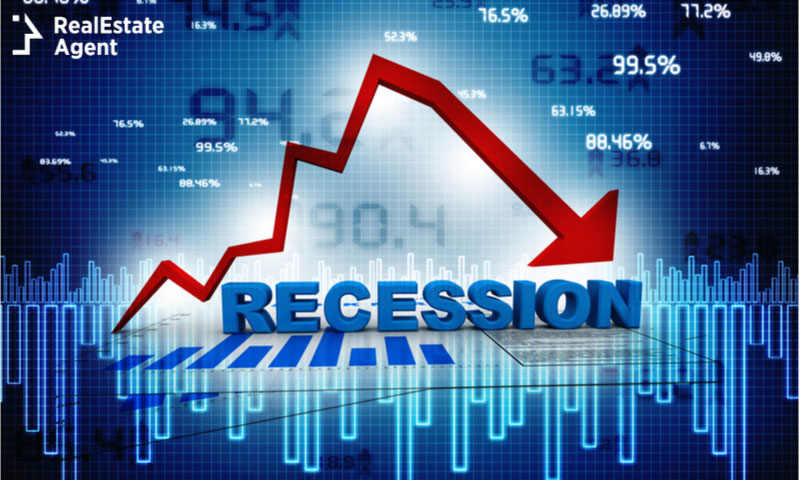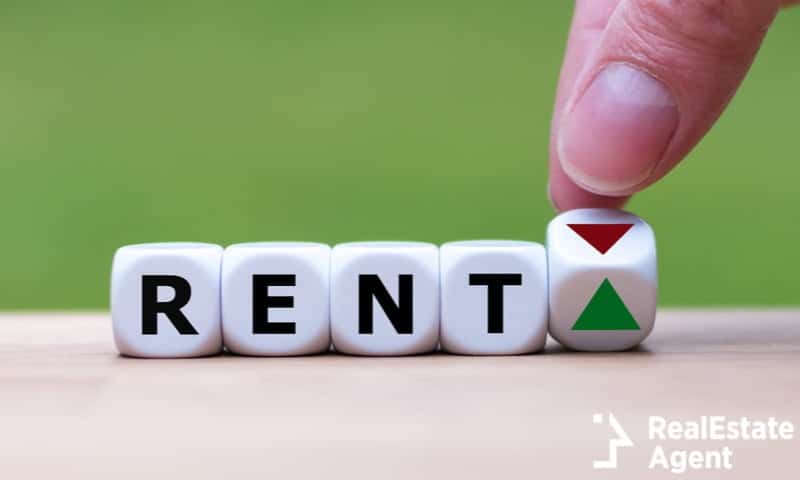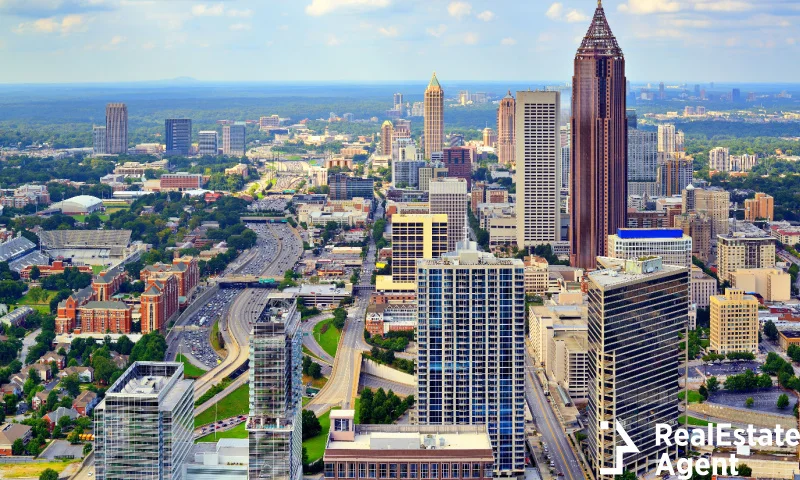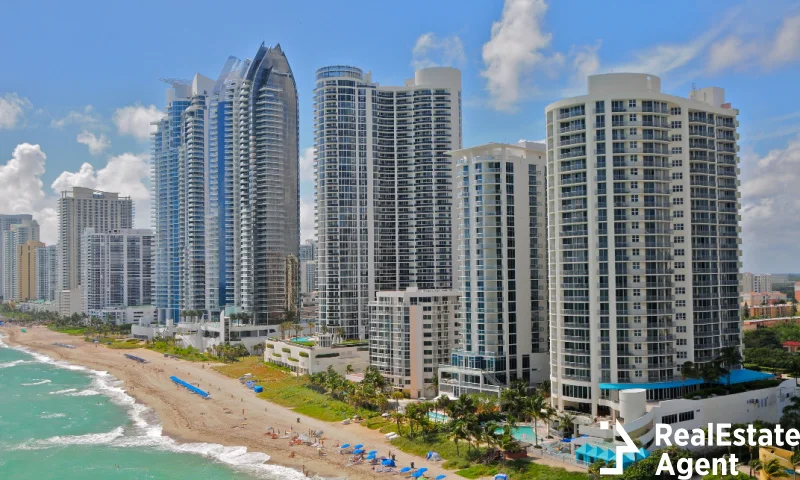More Americans live in urban areas than in 1950 and urbanization will continue to increase up to 90% by 2050, according to the predictions made by the Census Bureau. Three percent of the land hosts all the urban population, while the rural land, which makes 97% of the US territory, is home to only 19% of the population. Just like the bees, we like to live in large hives for the many opportunities offered by the urban environment. From jobs to schools, everything seems to be better, bigger and brighter. So, does this title even make sense? Are there cities that are more vulnerable to be hit from a recession? Since everybody prefers to live in a city, doesn’t that mean that they are safer than the rural areas, at least from an economic point of view?
Well, the truth is that when we live so close together, in cities of all shapes and sizes, we are more likely to react like a choir to every good or bad signal in the market. News spreads rapidly and influence decisions at all levels. It’s called the herd mentality. We like to copy other’s behaviors. If your neighbor bought a new car, you would be tempted to change yours, too. If your friends moved to a bigger house, you might be tempted to find a real estate agent on RealEstateAgent.com and move as well. But our imitative behavior is not enough to generate a crisis unless we all decide on a bank run, just like in the Great Depression.
At the moment, most Americans have positive feelings about our country and its economy. However, for more than a decade, the market has seen an undisturbed growth which many fear that it might end soon in a recession similar to the one that happened between 2008-2010. So, in this context, what are the cities most likely to be hit by a recession? Let’s analyze together a few indicators.
The foreclosure rate

When homeowners are unable to respect their loan amortization schedule and, as a result, lenders foreclose on their properties, then the real estate market is on the verge of a crisis. Homes are not able to maintain their ascending values as the market is flooded with many motivated buyers who are willing to sell under the market price. As bad as it may sound, foreclosures are for many a great lesson about personal finance. Foreclosures are new beginnings that allow people to start fresh and rebuild their lives on stronger foundations.
The top three states with the highest foreclosure rate as of May 2019 are New Jersey, Maryland and Florida. The foreclosure rate has been on a descending trend since the last recession, and at 0.47% is close to the rate registered in 2005 (0.46%).
A Redfin study analyzed by Reuters points out that the top three cities which might fare really poorly in the next recession are Riverside (CA), Phoenix AZ, and Miami FL.
Another list of vulnerable cities published by GOBankingRates[dot]com also reflects the foreclosure rate. The city of Newark from New Jersey topped the list, but Paterson also has an elevated risk of recession. With more than a quarter of mortgages underwater, Baltimore MD is also blacklisted, while from Florida, both Miami and Tallahassee are susceptible of a recession.
Delaware, Illinois, South Carolina, Connecticut, Ohio, Nevada and North Carolina are in the top 10 states with the highest foreclosure rates according to Attom Data Solutions. Overlapping other lists of cities at risk of recession, we find that there is a link between foreclosures and recession. So, keep an eye on these cities:
- Bridgeport and Hartford in Connecticut
- Detroit, Chicago, Aurora, and Joliet in Illinois
- Cleveland and Dayton in Ohio
- Fayetteville in North Carolina
- Columbia in South Carolina
The highest unemployment rate in the US

Foreclosures often occur due to unemployment or sudden drops in monthly income. Death and divorce are two milestones that may have a dramatic financial impact. Moreover, one in three families in the US is a single-parent family, most of them with a woman as the head-of-household. Holding more than one job is not uncommon among single-parent families.
Raising a child is a huge responsibility and many parents of teenagers may benefit from a good piece of advice. Also, teens may be forced to enter the workforce earlier. The figures released by the Bureau of Labor Statistics (BLS) reveal that more girls than boys start working after they turn 16. Unfortunately, our education system doesn’t always provide enough financial advice for teenagers. But on top of that, low wages are also discouraging. We will look in a minute at the states with the lowest annual income, but first, let’s find the states with the highest unemployment rate.
According to the BLS, Alaska had the highest unemployment rate in July, 2019 – 6.3% of its workforce was not employed. The District of Columbia, at 5.6%, was the second area with the highest number of people without a job, followed by Mississippi with an unemployment rate of 5.1%. Both New Mexico and Arizona were at a tie, at 4.9%. All are above the 3.70% national unemployment rate reported for July 2019.
The poorest households in the US

Every country has high-earners and people in need and the USA is no different. Enclaves of poverty have managed to evolve over the years in the New World, but that doesn’t mean that people who earn less aren’t happy. In most cases, in those regions, the cost of living is also lower, making the area more affordable overall. While living in the most expensive cities in the US comes with a higher income, the cost of living is not to be neglected at all.
According to the US Census Bureau, the households with the lowest monthly income can be found in West Virginia, where the median household income was $43,469 per year in 2018. Five more states have a median annual income below $50,000 and these are Mississippi, Arkansas, Louisiana, New Mexico, and Alabama. Indeed, according to the US News, the real estate agents in Huntsville Alabama can rejoice because their city has been nominated the most affordable place to live for the second year in a row. Other places that offer a reasonable cost of living are Fayetteville and Little Rock in Arkansas, Lafayette and Baton Rouge in Louisiana, and Des Moines, Iowa.
Just because one lives in a state with low income doesn’t mean that a recession will affect it to a greater extent than a larger metropolitan area – the damage would probably be directly proportional. But low-income families might feel the consequences of an economic recession sooner than others. The next two indicators might help us get closer to the cities most vulnerable to be hit first from a recession. They are the real GDP per capita and the homelessness rate.
States with the lowest real GDP per capital

As defined by the National Bureau of Economic Research, an economic recession is signaled by a significant drop in economic activity that pushes the real GDP down for several months. A lower real GDP is usually paired with a spike in the unemployment rate. At only $34,000, the state of Mississippi had the lowest real GDP per capita in 2018, followed by Arkansas, West Virginia, Idaho, and South Carolina. Theoretically, the major cities in these states could face a recession sooner or later, especially due to their low productivity, they rely heavily on imports, which might become more and more expensive in the future, due to the new trade war with China.
Cities with most homeless people

Homelessness is an escalating issue that demands immediate action. Why do people become homeless? The reasons are as many and as diverse as they can be. From divorce and unemployment, to homelessness as a way of life, the answers won’t cease to surprise you. However, homelessness may contribute to an increase in crime rate. People in certain neighborhoods may feel unsafe, which immediately will affect the real estate market. Bad reviews on websites like niche[dot]com or areavibes[dot]com will give any real estate agent headaches trying to sell a property in that area and may even demand innovative and creative ways of marketing a property.
Top 5 cities with the highest number of homeless people according to Forbes and Statista are the following:
- New York City – 78,676
- Los Angeles (city & county) – 49,955
- Seattle (King county) – 12,112
- San Diego (city & county) – 8,576
- San Jose / Santa Clara – 7,254
Homelessness may be among the causes of a real estate recession, for sure. But the fight with extreme poverty is not going to be easy. It will take time and many financial resources.
What do we know so far?

After analyzing these five indicators it is time to put all the pieces together and find the cities most vulnerable to be hit first from a recession. Before we move on, though, let’s look at the states that Americans move in and out of. According to the 2018 National Movers Study, most people left from New Jersey, Illinois, Connecticut, New York and Kansas to start a new life in Vermont, Oregon, Idaho, Nevada, or Arizona. If we corroborate all the data we have available, the most vulnerable cities and states are:
- Mississippi – the low median income, high unemployment, and a very low real GDP per capita make the city of Jackson and most urban areas in this state quite unappealing.
- Arkansas – although it boasts plenty of affordable cities, its low real GDP means there are few investments and employment opportunities. So, we have to include Little Rock on our list.
- Connecticut – it has a high foreclosure rate and many people move out of the state, which means people in Hartford and other urban areas might be already going through an economic depression.
- West Virginia – the fact that the economy is not doing very well in this state is seen in the low real GDP per capita as well as in the low median income. So, the city of Charleston enters our list, too.
- District of Columbia – it comes 6th among the cities with the highest number of people without shelter (6,904). But even more striking is its low volume of imports which suggests that there’s little purchase power. Unemployment is also elevated and only 41% of households own their homes. Washington, D.C. has a very unstable economic climate which should make one cautious about living there.
- New Jersey – has the highest foreclosure rate in the US and the most outbound moves, facts which raise a few question marks about the livability of Trenton and other cities in this state.
- New Mexico – low median income and high unemployment made us include this state on our list, too. Almost 20% of the state’s population lives in poverty. When it comes to imports, it ranks only 5th by the volume of imports in 2018, so the purchasing power is quite low. Therefore, Santa Fe and other urban areas in New Mexico may be very vulnerable in the event of a new economic recession.
In conclusion, our top 7 cities most vulnerable to be hit first from a recession are:
- Jackson, Mississippi
- Little Rock, Arkansas
- Hartford, Connecticut
- Charleston, West Virginia
- Washington, D.C.
- Trenton, New Jersey
- Santa Fe, New Mexico
Feel free to add more cities to our list. We are looking forward to your comments on the criteria we used and on our picks, of course.










You ask for comments :
Ok, here goes.
Many are unaware and perhaps you are too. I suggest you look more deeply at the financial difficulties blooming in Hawaii.
The pandemic has hit Hawaii especially hard. Unemployment numbers are staggeringly huge and much bigger compared to any other state.
A very large majority of wage earners are working for Govt agencies ( Fed, state & county and military). The retirement systems affiliated with those wage earners are already precariously underfunded. The future could bring catastrophe as the economic engine in Hawaii is hitched to tourism. The rest of the population have jobs affiliated with tourism. The health of people in Hawaii has benefitted from restrictions such as the “Stay at home orders” and “mandatory 14 quarantine at arrival “ an “masking”. But that has made tourism dry up. Tourism is the primary driver for financial stability and that has dried out bringing about a new dire reality for all of Hawaii.
Hawaii has a statewide, general excise tax ( GET) levied on all goods sold and services rendered. That GET revenue source is often overlooked or misinterpreted by analysts, probably because since Hawaii is the only US state which has the burdensome GET. For decades the Hawaii legislators have dipped into the GET fund to prop up the state Govt finances.
All in all, living in Hawaii is certainly pleasant and the days are full of sunshine, but the unspoken truth is that the future is not bright for those who reside in Hawaii, because soon the Govt stimulus and financial support must end as the state of Hawaii coffers are dry already.
Hey, Helen!
What you say rings true. The impact of the Covid-19 on the state of Hawaii was something we did not anticipate, and as you can see, it wasn’t covered in the article. Our blog also doesn’t talk about the pandemic since we have a separate blog such as U.S. areas hit hardest economically by the COVID 19 pandemic, where we discuss the issue.
As you have pointed out, the tourism that drives the state’s economy is not what it used to be. Therefore the economy is suffering, and that is just one issue. Soon the Government won’t be able to offer financial support, and that is a scary scenario. We think that during these times, the countries and states that are successfully dealing with the issue are the ones that manage to find a balance between keeping the economy flowing and keeping its communities safe from the virus.
As we can see, shutting down the industries that are affected the most by the pandemic will create an economic issue. On the other hand, if the main industries that drive the economy are functioning, this might result in a increase in COVID cases if proper safety measures are not taken or neglected.